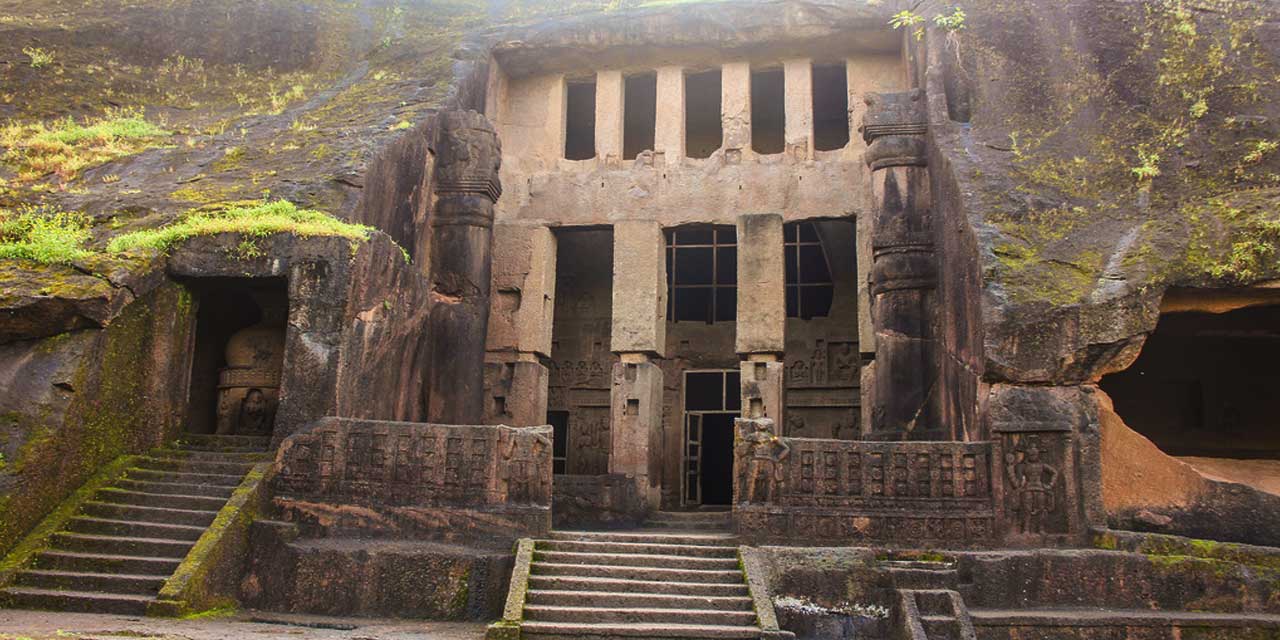
India has a number of basalt deltas, deposits of these rocks often make intriguing formations in the places they occur at. One of the more popular tourist places in Mumbai is a cave system in the basalt deposit called Kanheri Caves.
Kanheri Caves system is situated in the Sanjay Gandhi National park, Borivali, Mumbai. This system of caves is a remarkable example of Buddhist architecture and a symbol of tranquility. More than a hundred sub caves and equally numerous cave paintings can be found here. It was and still remains a popular tourist place in Mumbai.
Other more popular names for the place are Krishna Giri/ Kanha Giri, with Krishna loosely translating to Black and Giri to mountain. The name Krishna is also the name of the Hindu God Lord Krishna. The caves managed to capture a sizeable part of Buddhist culture.
Starting with the first century AD and ending sometime in the eleventh century AD. The cave systems managed to capture most of the rising, flourishing, and falling ages of Buddhism. Pilgrims can also be spotted every now and then, visiting the place.
These caves are single or multi-cell monasteries and serve the purpose of meditation and enchantment. Chaityagrah, a hall in the system, serves as the main place of worship. An enormous sculpture of Lord Buddha and another Chaityagrah can be found in Cave 3. As the later caves were discovered, they had a more artistic and decorative tone to them.
The earlier caves remained true to the spirit of ascetic and minimalistic principles of Buddhism. Promoting a simple and pious life, while being one with nature. The caves had an evolved water management system as well. This is indicated well by the presence of water tanks and water cisterns in every cave. Cave 34 also boasts a painted ceiling.
Some remarkable facts about Kanheri Caves
The caves are a major tourist attraction in Mumbai, that isn’t simply because of the architecture and art. They also hold the title of the largest number of excavations from a single hill. The marvelous basaltic black stone was slowly and carefully carved out to get the entire structure ready over centuries.
The actual entrance of the caves is five kilometers inside from the gate of the national park. There are options for getting there by cycle, driving, or taking a bus that runs inside the national park. The caves are shut down for visiting on Monday of every week.
A center of learning for Buddhist ways and people from far and wide visited it. While it was in use, its operation could be compared to the way Ajanta and Ellora caves were operated. As a center of learning, it saw an unassumingly large footfall which explains the size of it.
After being abandoned essentially, in the eleventh century- the cave system was left with unfinished business. There were and still are (if you’re planning on visiting it) about thirty incomplete works of art. Paintings of Lord Buddha that makes one wonder in awe what they might’ve looked like had they been finished.
Similarly, in Cave 90, there are several statues of Lord Buddha that can be found. From the left to the right wall hundreds of statues can be found- some of them have Lord Buddha is the lotus throne. Some have him in the meditative pose of the Padmasana. These sculptures are carved out of black-stone and basalt too.
In Cave 41 there are paintings and scenes from Lord Buddha’s life carved into the walls. Upon entering, there is on the left a sealed image of Buddha. And to the right of the porch is a seated figure of Buddha, and on his left is Padmapani or Sahasrabahu-Lokeswara, with ten additional heads piled up over his own.
There are a ruined temple and a lake by the carvings. The main caves are about 30 on each side of the ravine in the basalt deposit. The dam holds back the water and makes a sort of an artificial lake and there is a ruined temple north up above the lake. There are several Stupas and Dagobas near this temple.
